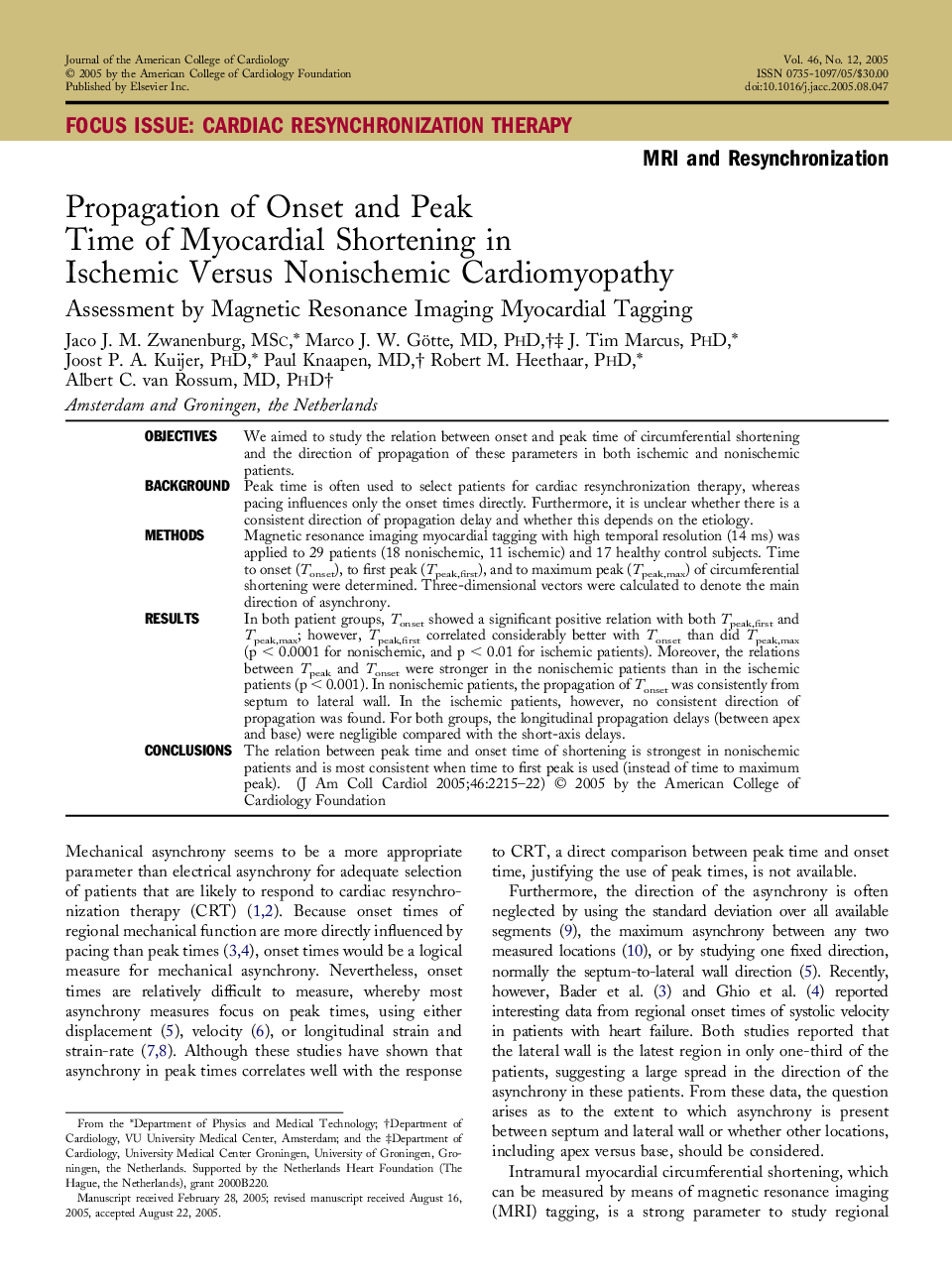| کد مقاله | کد نشریه | سال انتشار | مقاله انگلیسی | نسخه تمام متن |
|---|---|---|---|---|
| 2952682 | 1577526 | 2005 | 8 صفحه PDF | دانلود رایگان |

ObjectivesWe aimed to study the relation between onset and peak time of circumferential shortening and the direction of propagation of these parameters in both ischemic and nonischemic patients.BackgroundPeak time is often used to select patients for cardiac resynchronization therapy, whereas pacing influences only the onset times directly. Furthermore, it is unclear whether there is a consistent direction of propagation delay and whether this depends on the etiology.MethodsMagnetic resonance imaging myocardial tagging with high temporal resolution (14 ms) was applied to 29 patients (18 nonischemic, 11 ischemic) and 17 healthy control subjects. Time to onset (Tonset), to first peak (Tpeak,first), and to maximum peak (Tpeak,max) of circumferential shortening were determined. Three-dimensional vectors were calculated to denote the main direction of asynchrony.ResultsIn both patient groups, Tonsetshowed a significant positive relation with both Tpeak,firstand Tpeak,max; however, Tpeak,firstcorrelated considerably better with Tonsetthan did Tpeak,max(p < 0.0001 for nonischemic, and p < 0.01 for ischemic patients). Moreover, the relations between Tpeakand Tonsetwere stronger in the nonischemic patients than in the ischemic patients (p < 0.001). In nonischemic patients, the propagation of Tonsetwas consistently from septum to lateral wall. In the ischemic patients, however, no consistent direction of propagation was found. For both groups, the longitudinal propagation delays (between apex and base) were negligible compared with the short-axis delays.ConclusionsThe relation between peak time and onset time of shortening is strongest in nonischemic patients and is most consistent when time to first peak is used (instead of time to maximum peak).
Journal: Journal of the American College of Cardiology - Volume 46, Issue 12, 20 December 2005, Pages 2215–2222